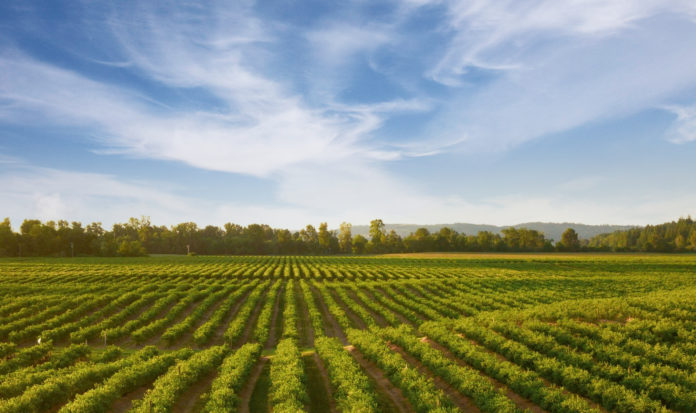Knowing where your CBD comes from is important, from the standpoint of purity and quality. With that in mind, we’d like to take a minute to talk about the history of hemp in Kentucky. You see, Kentucky is where we choose to grow our hemp. We do so because it has some of the richest soil for hemp crops, allowing them to thrive.
Hemp isn’t a new product. People have been growing it for hundreds of years as a textile to make clothing, rope, paper, and other useful items. It’s a hardy plant that can grow over 10 feet tall in a variety of climates.
It’s important to note that hemp is not the same as marijuana. Both are strains of the cannabis plant, but marijuana is grown for recreational use, while hemp contains only trace amounts of THC (the compound that gets people high). Hemp won’t get you high — it’s an industrial crop.
So, let’s get started with a brief historical recap of hemp in the great state of Kentucky!
The Decline of Hemp
Hemp was one of Kentucky’s main crops back in the 1770s. This crop’s abundance turned the Danville region into a super distributor, with all kinds of interesting products. Kentucky enjoyed prominence as the country’s biggest hemp producer, but things were about to change.
Once slavery was outlawed after the Civil War, farmers suddenly couldn’t find enough people to work their fields (surprise, surprise). At the same time, hemp importers could sell their goods for much lower prices than could Kentucky’s farmers. With that, the state’s production slowed to where hemp farming was no longer a profitable business.
Kentucky farmers began growing tobacco, instead. Aside from a brief spike during World War I, that marked the end of this crop in Kentucky.
All That Reefer Madness
There are a variety of theories out there explaining how hemp made it onto the government’s naughty list, but they all share one thing in common — competing interests.
Companies like DuPont chemical and International paper saw hemp as a threat to their market dominance. Because hemp is easy to grow, it could replace traditional paper and petroleum products, similar to how corn is used to make ethanol today.
Thus began “reefer madness.” Thanks in large part to William Randolph Hearst — a media tycoon with lucrative business ties to both industries — marijuana was scandalized as horrific and dangerous.
How Fear Became Reality
The story goes that Secretary of the Treasury/banking magnate Andrew Mellon appointed his nephew, Harry Anslinger, to the Federal Bureau of Narcotics. Using extremely racist propaganda (such as labeling jazz music as Satanic — the guy really hated jazz), Anslinger ushered in a new era of fear-mongering against marijuana.
Anslinger’s 1937 article, “Marijuana, Assassin of Youth,” became a notorious tract that many suggest sparked the War on Drugs. Check out this excerpt below:
“No one can predict [marijuana’s] effect. No one knows, when he places a marijuana cigarette to his lips, whether he will become a philosopher, a joyous reveler in a musical heaven, a mad insensate, a calm philosopher, or a murderer.”
Anslinger wasn’t the only one scaring the daylights out of the middle class. William Randolph Hearst — the guy whose newspaper fomented the Spanish-American War — decided to do his part and amplify this message of fear.
Taking cues from Anslinger, Hearst helped to cloud the differences between cannabis and marijuana. Despite the misinformation, it didn’t take long for scared parents to send strongly worded letters demanding a full-scale ban on marijuana. With the Marijuana Tax Act of 1937, it finally happened.
Perhaps it’s just coincidence, but right around that time, Secretary of the Treasury Andrew Mellon also invested considerable sums in DuPont’s new textile — a plastic fiber called nylon.
Hemp production in the U.S. plummeted, and no place was hit harder than Kentucky. The Tax Act forced Kentucky’s remaining hemp farmers to get licenses to grow the “dangerous” plant, exposing them to potential legal trouble. Most didn’t think it was worth it, so they grew other crops.
Kentucky’s Brief Hemp Comeback
Fast forward to World War II, when the Japanese overtook the Philippines, where much of the world’s hemp was grown. There was suddenly a large need for domestic hemp, so the USDA launched their 1942 campaign, “Hemp for Victory,” which encouraged American farmers to grow more hemp.
Once again, Kentucky stepped up and delivered nearly 60,000 tons of hemp and seed for the rest of the country. The government made promises to pay these farmers, and it seemed like hemp might once again flourish as a cash crop. But times changed.
As Japan fell, they lost control of the Philippines. While this was great news for the world, it spelled doom for Kentucky’s hemp production. By 1945, with hemp once again being imported cheaply from the Philippines, U.S. hemp production was over.
In 1970, Richard Nixon hammered one more nail into the coffin by signing the Controlled Substances Act, making Marijuana a Schedule I narcotic — right up there with meth, heroin, and cocaine.
The Farm Bill of 2018
In 2018, the wave finally rolled back with the passing of the Farm Bill. Now, farmers in most states can grow industrial hemp with no fear of criminal consequences.
While all farmers need a license to do so, they are free to grow cannabis containing no more than 0.3% THC content.
Kentucky’s Pilot Program
Now that it’s legal to grow industrial hemp, Kentucky is one of the states actively taking part in pilot programs to establish a real hemp industry.
More than 60% of pilot hemp farms in Kentucky cultivate CBD-rich hemp plants. Here’s why this is a big deal: farming hemp creates jobs, slows deforestation, and renews the soil.
Pivoting toward hemp could even play a role in weaning the U.S. off petroleum. CBDfx proudly sources our CBD from farms in Kentucky.
Through third-party lab testing, we ensure all products are organic, safe, and formulated as advertised.
CBDfx’s Commitment to Quality
Crafting the best CBD supplements means starting with strictly organic materials. Cannabis sourced from organic farms works better since it contains no synthetic fertilizers or pesticide residues that weaken the effects.
It’s essential to preserve as many cannabinoids as possible when creating supplements. Along with CBD, compounds like CBG and CBN play a significant role in helping your body absorb the good stuff and put it to work.
We’re committed to providing you with quality CBD products. And we’re grateful that, once again, hemp is back in its “old Kentucky home.”
Ready to shop our incredible selection of organic, Kentucky-grown CBD products?
Click here to try one of our tincture oils.

